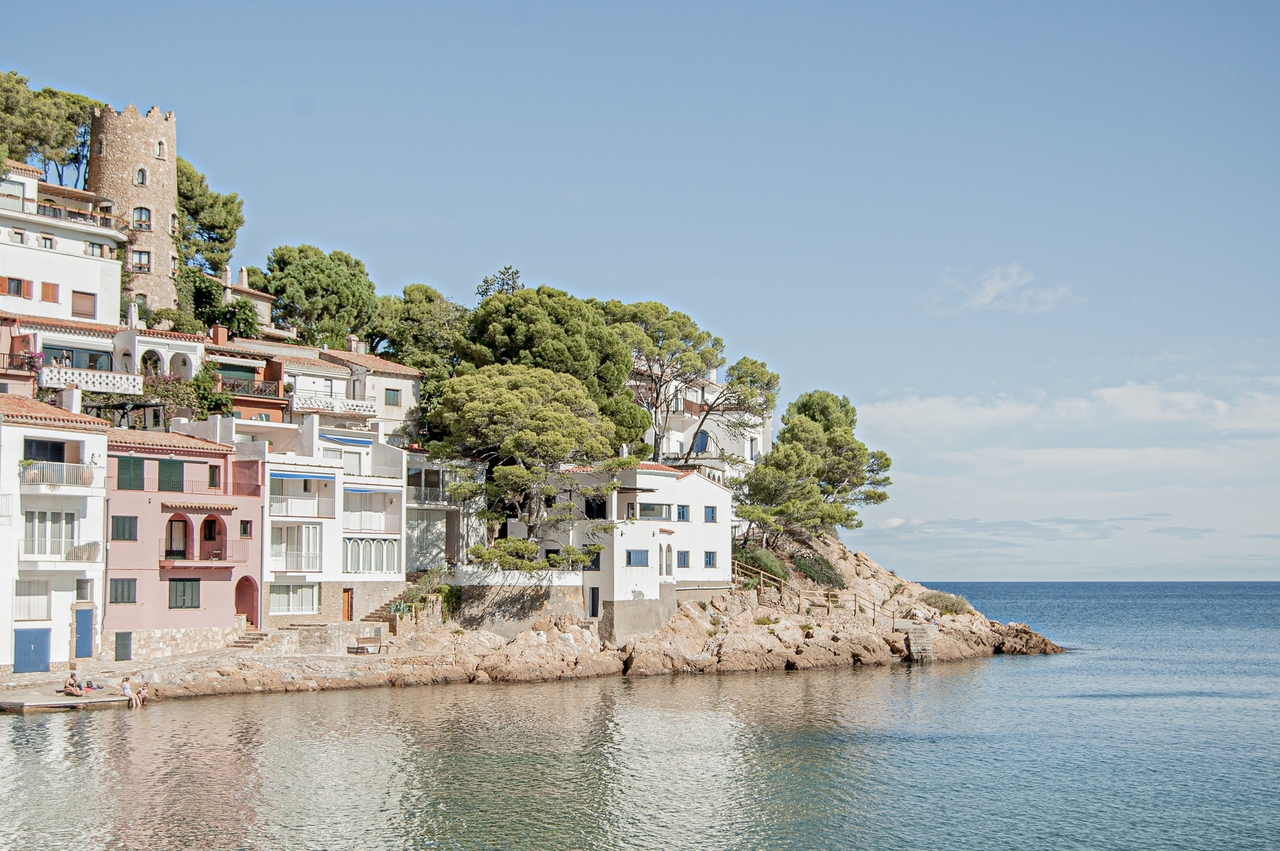Trip Author
Judita Hedervariova
Breathtaking Costa Brava
A region well-known for its rocky cliffs, medieval countryside, tasty Catalan food, fishing villages, and legendary works of Salvador Dalí.
Costa Brava
Costa Brava is a region on the coastline of the Mediterranean Sea, that may be found in northeastern Spain - Catalonia, in the province of Girona. Costa Brava, which in translation means "Wild Coast," is a region well-known for its rocky cliffs, medieval countryside, tasty Catalan food and wine, fishing villages, and legendary works of Salvador Dalí.
Please note that Costa Brava as a region is recommended to travel by car as public transport can be limited. However, a combination of both, traveling by car to explore remote areas and using public transportation to get around the city and your site, is a great compromise.
Most beautiful villages and cities of Costa Brava
Costa Brava is full of beautiful coastal and inland medieval cities and villages. Here are some that should be noticed on the visit to Costa Brava. Whether you visit a larger city such as Girona or Blanes or prefer more minor and less tourist places such as Pals or Calella de Palafrugell, you will find a vibrant and authentic Catalan atmosphere.
Adventure Activities
Costa Brava's clear water and rich flora and fauna mean excellent conditions for scuba diving. The scuba diving activity mentioned below is great for beginners who want to learn how to dive. In addition, clear water and a beautiful rugged coastline allow you to enjoy sailing, kayaking, or climbing via Ferrata.
Hiking
Costa Brava is a superb place for hiking because of its wide range of various terrains; thus, people of different skills and preferences can find a hiking route that suits them the most. Cala Pola is a moderate 5 km hike with breathtaking beach and castle views.
Punta Falconera is a circular hiking 15 km long trail from Roses. Torre de Querroig is a 13 km long trail near the Spanish border with France. Cami de Ronda is a famous trail by the coastline, with an option to do a lineal (43 km) or circular (140km) trail.
Museums
The Gala Dalí Castle, Dalí Theatre and Museum, and Salvador Dalí House together make up the Dalian Triangle, a must-see for all art lovers. Toy Museum of Catalonia will take you through the history of various children's toys and games.
Parks
Jardines de Santa Clotilde is a beautiful garden on top of the cliff offering fantastic sea views. Conversely, the more famous Cap de Creus National Park is known for its biodiversity, coastal location, and beautiful scenery. In addition, Aiguamolls de l'Empordà is a wetland popular among birdwatchers and nature enthusiasts.
Food & Wine
El Celler de Can Roca is a world-famous fine dining restaurant owned by three brothers. They serve traditional dishes of the Catalan region in an innovative and modern way. Since 2009, the restaurant has had 3 estrellas Michelin and has also been listed in the World's Best Restaurants.
Vicus is a restaurant in Pals offering contemporary Catalan cuisine with a focus on seasonal, traditional and authentic tastes. For a more casual dinner with a beautiful sea view, a visit to a famous Toc al Mar restaurant is a great idea. They serve local seafood grilled on a woodfire.
Other
The castle Castillo de Tossa de Mar served various purposes throughout history. Constructed in the 12th century during the medieval period, the castle has a long history dating back to Roman times. As mentioned above in the trip list, the Sant Pere de Rodes monastery is in Cap de Crus National Park.
The monastery dates back to the 9th century and hosted a community of Benedictine monks. Peralada Mas Marcè is a local ecological farm where you can learn more about the production, visit the sheep farm, and buy products from the farm. Last but not least, Albanyà Astronomical Observatory allows you to immerse in the fascinating world of astronomy.
Enjoy the trip!
Feliz viaje!




